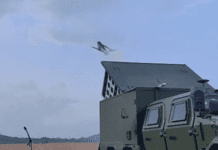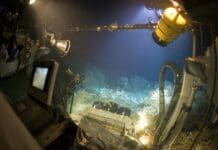This post is also available in:
 עברית (Hebrew)
עברית (Hebrew)
Over the backdrop of the Israel-UAE agreement, it is worth taking a look at the emirates’ capabilities in the unmanned flights field. Dubai, the commercial capital of the United Arab Emirates, has been at the forefront of the adoption of cutting-edge drone technology like drone taxis. Government-sponsored innovation labs have developed prototype delivery drones, while the public transport authority was among the first in the world to conduct test flights with autonomous aerial vehicle developers EHang and Volocopter.
Until now UAE federal aviation regulations have restricted drone usage to specific fly zones and controlled commercial scenarios, allowing photography, inspection and survey services, but prohibiting any beyond line of sight operations.
But a new law issued this month paves the way for a commercial drone services ecosystem that allows both drone delivery and flying taxis.
The new Dubai-specific law provides a framework for Dubai Civil Aviation Authority to develop procedures, systems and regulations to allow a broader range of drone usage.
It will allow Dubai Civil Aviation Authority to roll-out its Dubai Sky Dome initiative, which is being developed to provide the physical and virtual infrastructure needed for a full spectrum of drone services. The authority has already invested in the development of an air traffic control system to manage drone traffic and will specify air corridors, height restrictions and radio frequencies, as reported by dronelife.com.
In the military sphere, UAE has unveiled its first locally-made UAV in February. The high-performance “Garmousha” vertical take-off and landing drone is manufactured by ADASI in an agreement with the General Headquarters of the UAE Armed Forces.
Aimed at further advancing air operations and enhancing performance, the new Garmousha drone is a light military unmanned aircraft designed to carry payloads of approximately 100kg, with an endurance of six hours and 150km. A new platform offering an integrated high-definition camera and coverage of a larger surface area, the helicopter provides optimal operational flexibility, allowing militaries to save manned helicopters for critical missions, according to uasvision.com.
The drone can also be used to detect gas pipeline leaks, to survey infrastructure, and in search and rescue operations. It can simultaneously carry a wide variety of payloads, including a stabilized electro-optical sensor for day and night ISR collection.


























